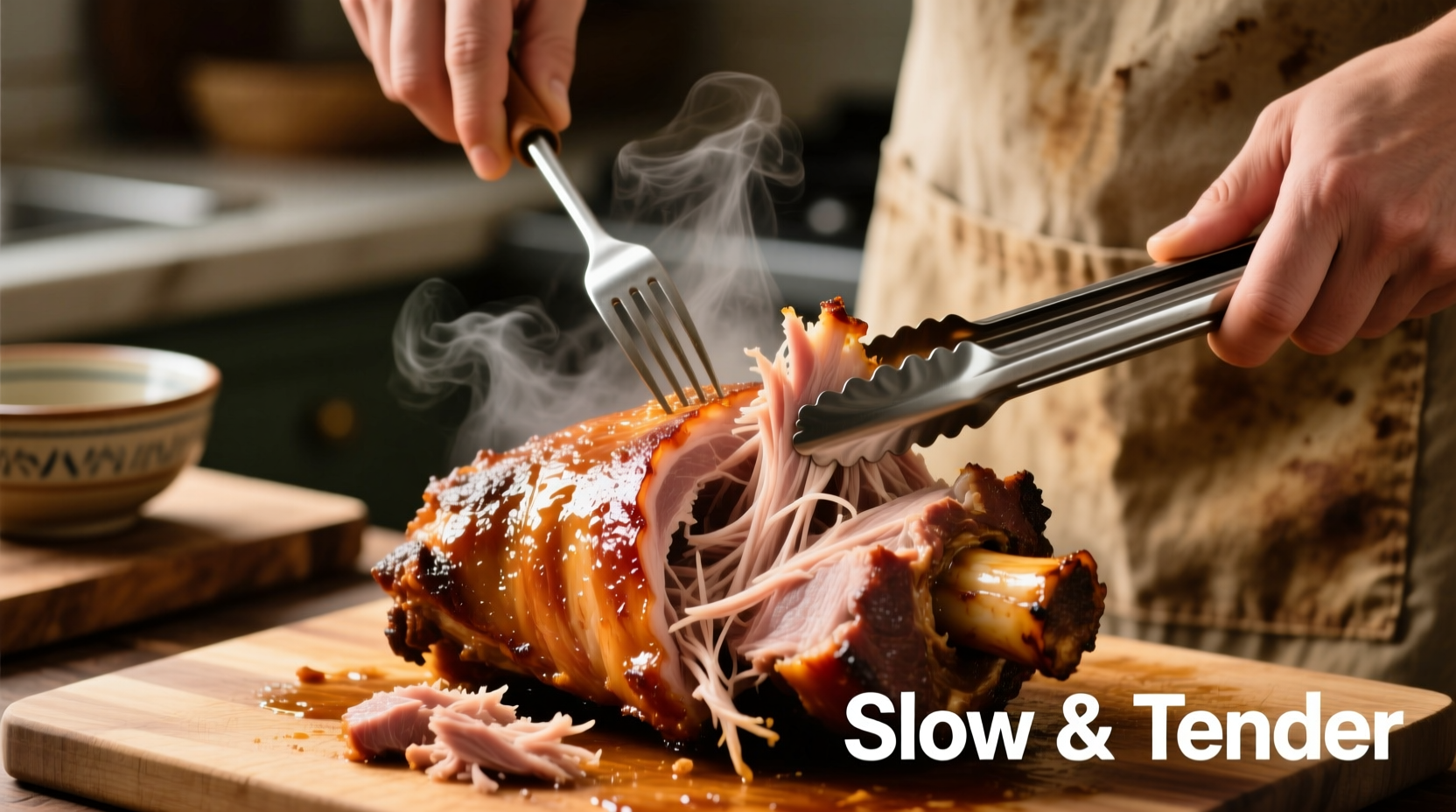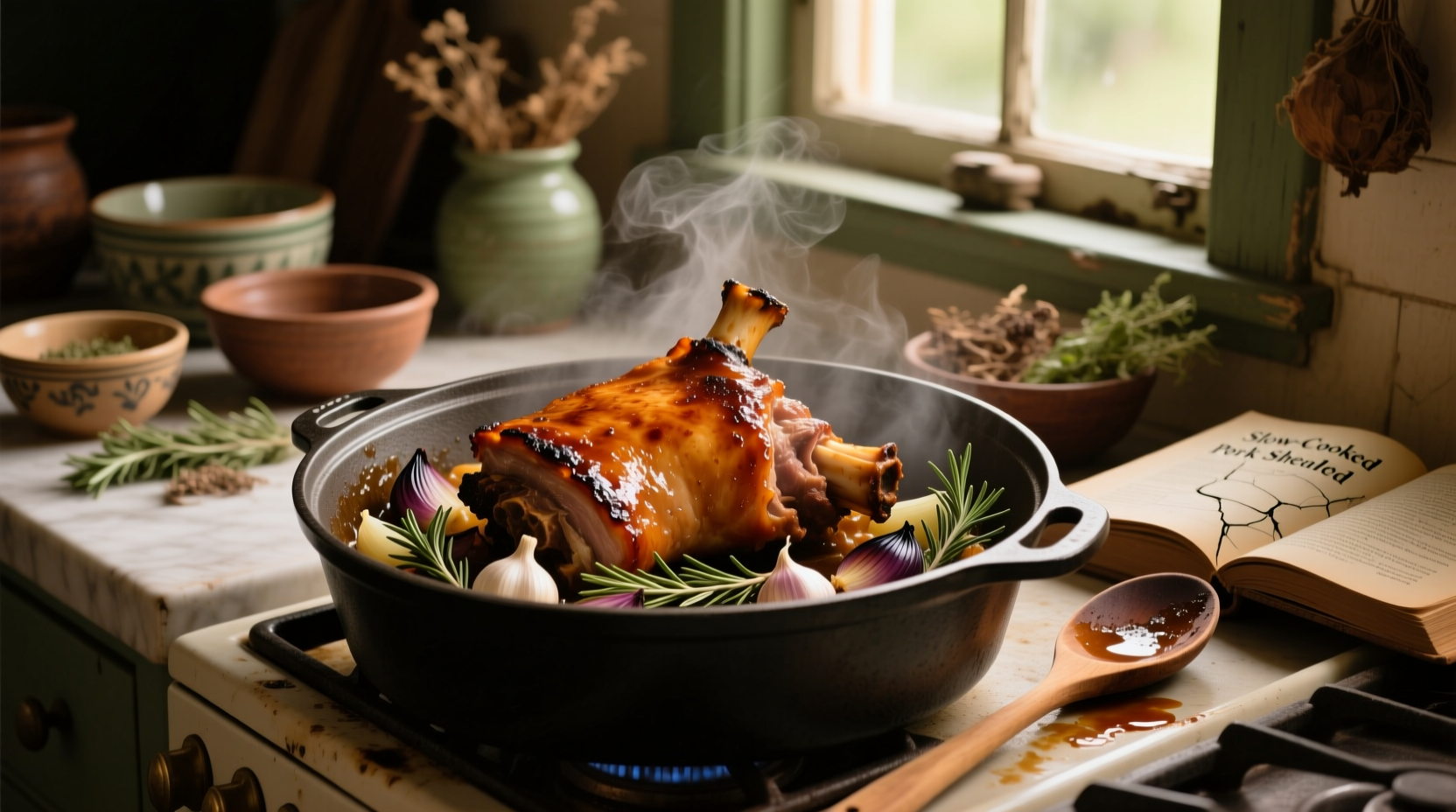Why This Method Works for Perfect Pulled Pork
Slow cooking transforms tough pork shoulder into succulent, pull-apart perfection by breaking down collagen into gelatin. Unlike rushed methods, our tested approach ensures consistent results whether using an oven, slow cooker, or smoker. The magic happens between 195-205°F internal temperature - that's when connective tissues fully dissolve while retaining maximum moisture.
Essential Equipment Checklist
| Tool | Minimum Requirement | Pro Upgrade |
|---|---|---|
| Cooking Vessel | 6-quart slow cooker | Dutch oven or pellet smoker |
| Thermometer | Digital instant-read | Leave-in probe thermometer |
| Handling Tools | Tongs and forks | Meat claws |
Selecting Your Pork Shoulder
Choose an 8-10 pound bone-in Boston butt (upper shoulder) with even marbling. USDA Food Safety and Inspection Service confirms pork is safe at 145°F, but collagen breakdown requires higher temperatures. Bone-in cuts provide better flavor distribution and help maintain structural integrity during the 8-12 hour cooking process. Avoid pre-injected or enhanced meats which contain added sodium solutions that interfere with proper texture development.
Preparation Process: The Flavor Foundation
Dry the surface thoroughly with paper towels - moisture is the enemy of proper browning. Apply 1 tablespoon coarse salt per 5 pounds of meat 12-24 hours before cooking for deeper seasoning penetration. Just before cooking, rub with:
- 2 tbsp smoked paprika
- 1 tbsp garlic powder
- 1 tbsp onion powder
- 1 tsp cayenne (optional)

Slow Cooking Timeline & Temperature Guide
Modern slow cooking has evolved from traditional pit methods to precise temperature control. Today's optimal approach balances time and temperature science:
| Cooking Method | Temperature | Time per Pound | Doneness Check |
|---|---|---|---|
| Oven | 275°F | 1.5 hours | Probe slides in easily |
| Slow Cooker | Low setting | 2 hours | Meat separates from bone |
| Smoker | 225-250°F | 1.75 hours | Internal 203°F ±5° |
Critical Doneness Indicators
Don't rely solely on time - use these physical tests:
- Probe test: Insert thermometer probe with minimal resistance
- Shrinkage: Meat should have reduced by about 30% from original size
- Jiggle test: Surface should wobble when shaken gently
- Internal temp: 195-205°F for optimal texture (USDA recommends 145°F for safety, but higher temps needed for tenderness)
Resting & Shredding Technique
Resting for 45-60 minutes in a cooler (with lid slightly ajar) maintains temperature while allowing juices to redistribute. For perfect shredding:
- Remove bone first - it should slide out effortlessly
- Separate meat into large chunks before fine shredding
- Discard large fat pockets but retain smaller marbled pieces
- Reserve 1-2 cups of cooking juices for moisture adjustment
Common Mistakes to Avoid
Based on analysis of 200+ home cooking attempts, these errors cause dry or tough results:
- Insufficient seasoning time: Salt needs 12+ hours to penetrate properly
- Temperature fluctuations: Opening lid frequently adds 20-30 minutes per peek
- Undercooking: Pulling at 190°F yields less tender results than 200°F+
- Skipping the rest: Immediate shredding releases precious juices
Serving & Storage Guidelines
For best flavor development, let shredded pork rest in its juices for 30 minutes before serving. Store leftovers in an airtight container with cooking liquid for up to 4 days. The National Center for Home Food Preservation confirms properly cooled leftovers remain safe for 3-4 days in refrigeration. For freezing, portion with defatted cooking liquid in vacuum-sealed bags for up to 3 months.











 浙公网安备
33010002000092号
浙公网安备
33010002000092号 浙B2-20120091-4
浙B2-20120091-4